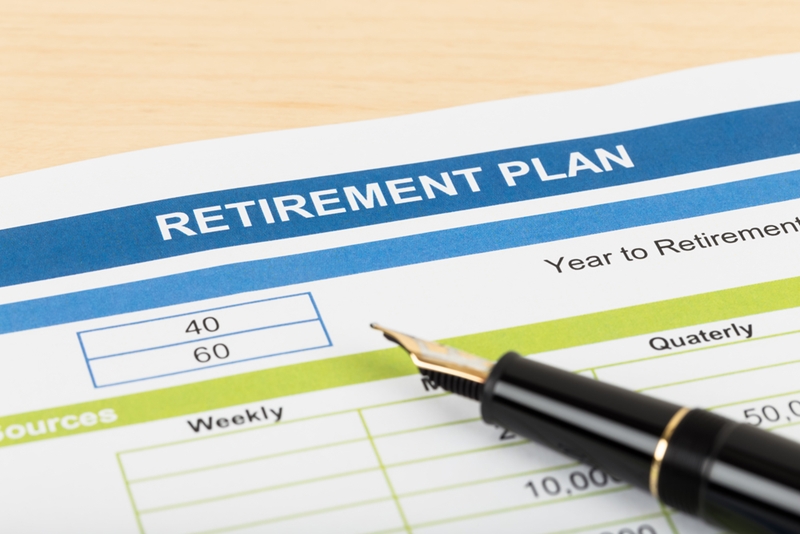Make The Most Of Your 401(k) Savings
One of the best and most widely available methods for saving enough to retire comfortably is a 401(k) plan. These retirement savings accounts are a type of defined contribution plan that allows American workers to save income and allow it to grow. According to the American Benefits Council, 401(k) plans are the most popular form of defined contribution1 savings in the U.S., with more than 630,000 active plans in the country as of April 2014. That accounts for $3.8 trillion in total assets, making 401(k) plans a major component of the U.S. economy. These savings plans are available to around 80 percent of all full-time workers, so it’s important to understand how to get the most out of them.
“Look for 401(k) funds that are not actively managed.”
How to trim spending, increase saving
While 401(k) plans make it easy to save for retirement, they come with some caveats that need to be managed. They also aren’t usually free. The funds you invest your savings into often come with administrative fees that will lower the final amount that actually becomes yours. Forbes contributor John Wasik compiled a useful guide on how to reduce the amount you spend on fees2 so you can concentrate on saving.
Primarily, you should look for funds that are not actively managed, according to Wasik. Actively managed funds allocate their assets toward the stocks and bonds they believe will perform well. Although it’s the job of many financial professionals to do this shuffling, and though they may be highly trained, the odds are not in their favor. A recent study by NerdWallet found that Wall Street analysts picked the wrong stocks about 49 percent of the time. This only echoes the results of a landmark study into stock market prescience by researchers Laurent Barras, Olivier Scaillet and Russell Wermers. In an analysis of more than 2,000 stock traders operating over 32 years, this study found that almost none were able to outperform3 the overall market. Essentially, picking stocks is based on luck, and it’s not frugal to spend money on a game of chance. Instead, choose 401(k) funds that operate as an index. These funds choose stocks and bonds that span a broad category of businesses, which lessens the chances of major losses and provides gradual growth without high fees. For the smart, long-term investor, index funds are the way to go.
Similarly, Wasik warns 401(k) investors against funds that charge commissions, flat fees or otherwise hidden expenses. While flat fees may be preferable to any of these, it’s important to take a look and see what you’re working with if you’re unaware. This could also lessen the shock of lower than expected returns. For example, as Wasik notes, a $20 flat fee on a fund that you invest $400 per year into could mean a 5 percent loss from fees alone.
“Hidden” fees may be even more difficult to sniff out, simply due to their nature of being hidden. According to Wasik, some funds will charge a “revenue sharing” fee, also known as 12b-1 fees. 401(k) account holders can call their fund managers and ask if this applies to them, and also request them to switch if that is indeed the case. These fees are not clearly stated up front, but could amount to huge losses over time. You can pool the resources of your fellow employees together and request these changes be made, Wasik noted, for additional bargaining power.
401(k) plans are the most popular form of defined contribution savings in the U.S.
What to avoid
If properly managed without early withdrawal, 401(k) funds offer a reliable source of income in retirement. This goal is hard to envision 20 or more years ahead of time, though, which is why some choose to withdraw their savings early. Not only does this incur a tax penalty, but that money will be unavailable in retirement. To avoid early withdrawal from a 401(k), Wasik recommended establishing an emergency fund.4 This should be the equivalent of three to six months of basic expenses in order to provide some cushion for prolonged periods of financial hardship. It also needs to be liquid cash – use a normal savings account instead of a money market or Individual Retirement Account for emergency savings.
To make this more manageable, Wasik suggested setting up “buckets” for your emergency fund. If possible, this can just be three separate bank accounts. Use one account for utility bills, one for appliance or car repairs that may be more costly, and a third for larger expenses like medical bills. If you ever enter crisis mode, this compartmentalization can make management of these funds easier and, more importantly, prevent you from going into debt.
In times of extreme financial stress, don’t forget that it’s possible to negotiate most debts. Hospitals are especially open to negotiating co-payments in the form of a payment plan. If you can make a good case, you may even be able to get the debt forgiven. Don’t rely on this method, but instead save it for a worst-case scenario. It’s also possible to contact a debt counselor who can help make the tough decisions of how to repay creditors and get back on your feet.
The views expressed by the articles and sites linked in this post do not necessarily reflect the opinions and policies of Cash Central or Community Choice Financial®.
Sources:
1American Benefits Council. (2019, Jan). Retrieved from: https://www.americanbenefitscouncil.org/pub/?id=e613e1b6%2Df57b%2D1368%2Dc1fb%2D966598903769
2Wasik, John. (2015, Dec 14). Retrieved from: https://www.forbes.com/sites/johnwasik/2015/12/14/four-ways-to-cut-401k-costs-save-more/?sh=1bfca9a462d7
3Barras, L., Scaillet, O., Wermers, R. (2006, Jul). Retrieved from: http://www-stat.wharton.upenn.edu/~steele/Courses/956/Resource/MultipleComparision/FDRMutualFundAlphas.pdf
4Wasik, John. (2015, Dec 14). Retrieved from: https://www.forbes.com/sites/johnwasik/2015/12/14/two-big-401k-blunders-to-avoid/?sh=53d77cde59e8

 You must have JavaScript enabled to use this site.
You must have JavaScript enabled to use this site.
 For a better user experience consider upgrading your browser.
For a better user experience consider upgrading your browser.

